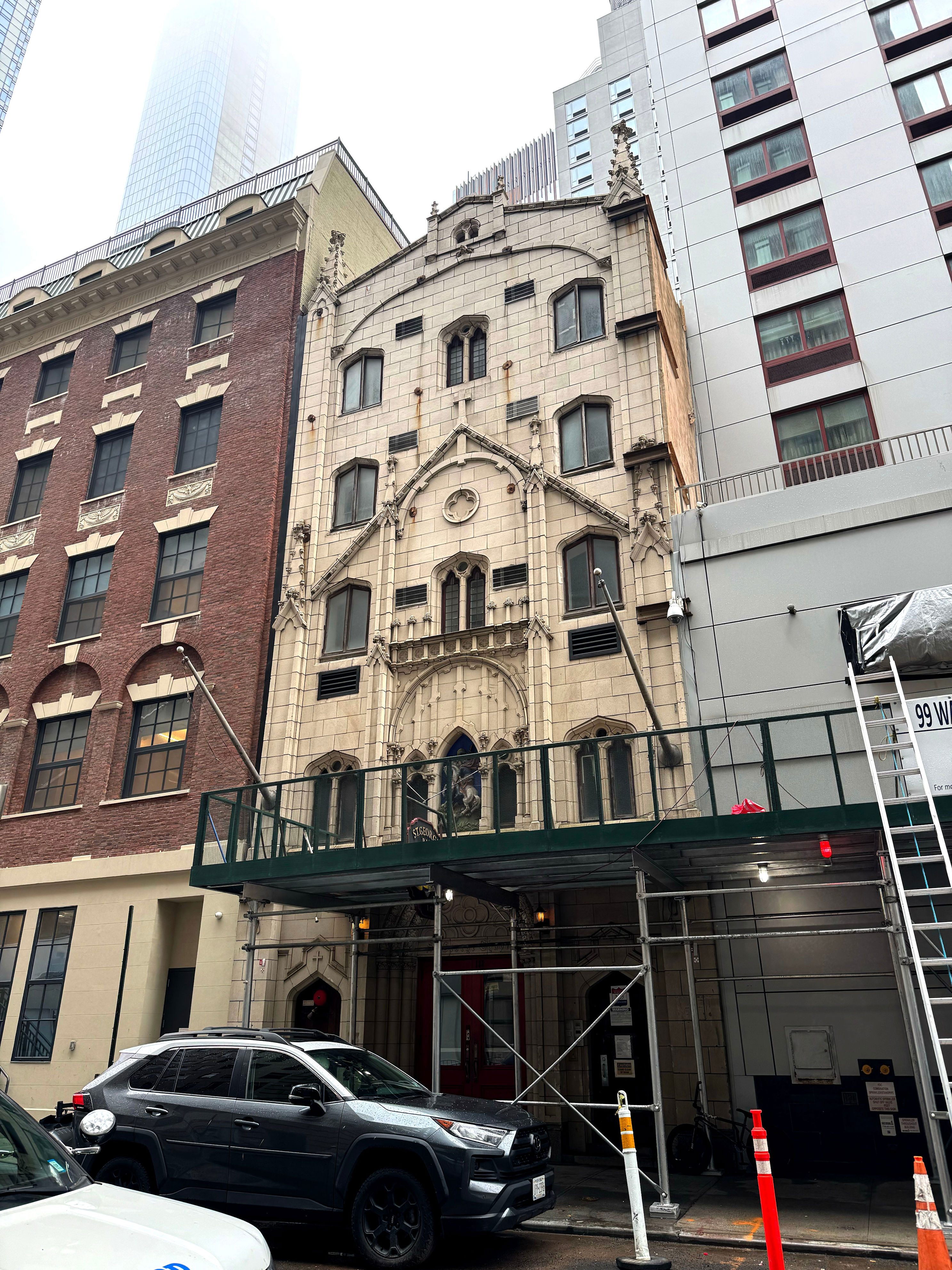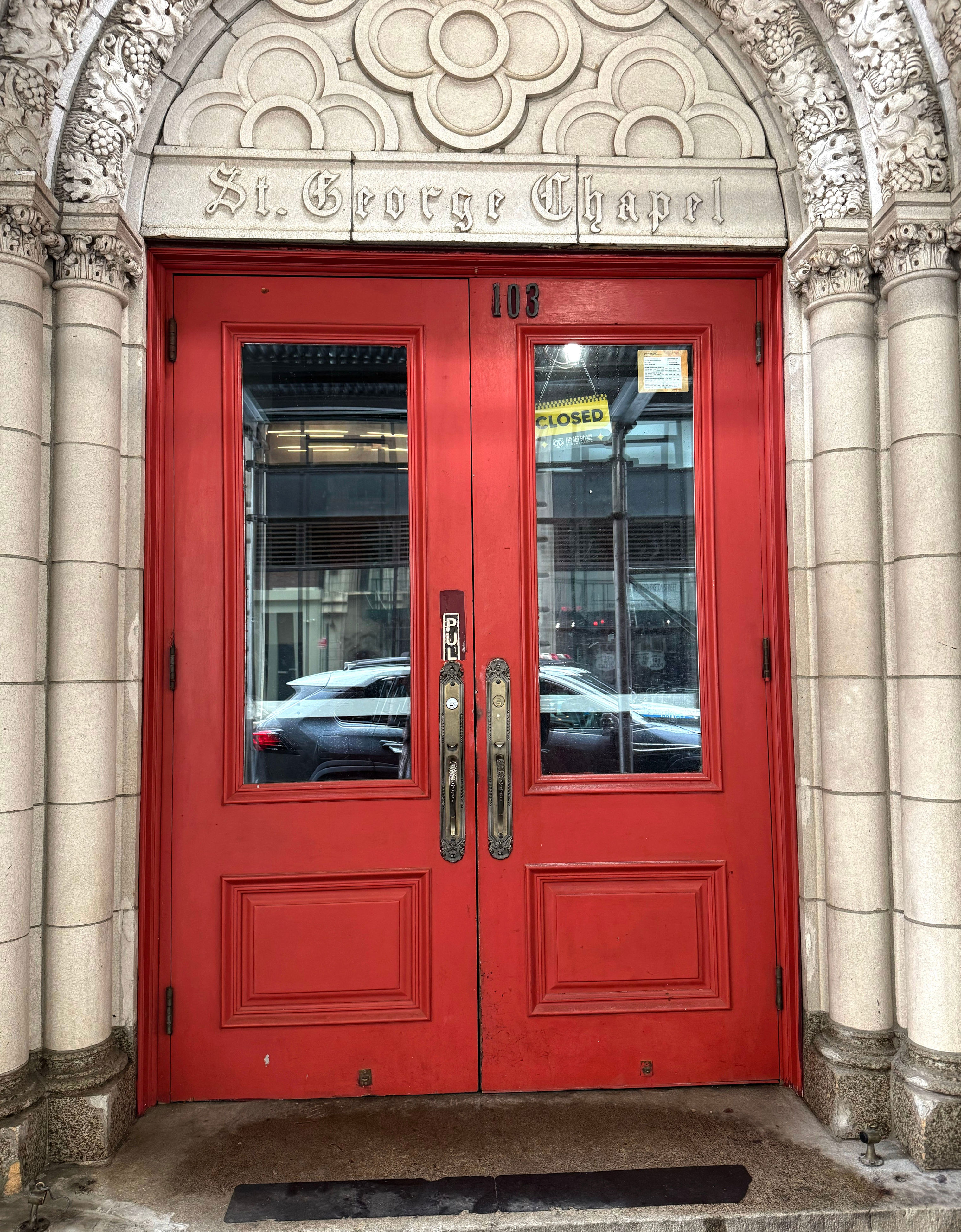A Glimpse into the Forgotten History of Little Syria
Smoke curled up from the subway grate as I stepped out of Wall Street station. A light drizzle misted the streets as Manhattan mums wrestled with buggies, men in suits sprinted past clutching bagels, and the New York Stock Exchange ticker blinked market updates between the corners of Wall Street and Exchange Place. It was a regular weekday in the world’s most important financial district. The Lower Manhattan skyline towered over me as I waited patiently for the traffic light to turn green, the early summer heat sticking to me despite the rain.
As I turned the corner into Edgar Street, it was hard to believe that this area — now the centre of global finance — was once known as Little Syria, home to the first Arab community in both the United States and the wider continent. Formed in the 1880s by immigrants from Ottoman-controlled Greater Syria, it was once a neighborhood of Arabic shop signs, bookshops, bakeries, and newspapers — the latter made possible by the linotype machine’s early adaptation for Arabic script. Around 95,000 Arabs arrived in the States during the Great Migration of 1880–1924, many settling in Lower Manhattan because of its proximity to the docks, where the men could find work.
Exploring this overlooked part of New York’s history this year — during the city’s 400th anniversary — felt especially poignant. It was a chance to reflect not just on the communities that built it, but on how easily entire histories risk vanishing when neighborhoods are erased. This reality of erasure felt particularly stark standing opposite the Battery Parking Garage, with a TGI Fridays across the street. If not for the Elizabeth H. Berger Plaza tucked in between, there’d be little sign this was ever a cultural stronghold that would have been scented with shisha and baklava rather than pizza and cheesecake.

The plaza is a quiet patch of green with winding stone paths and signs commemorating the history of the Financial District and Little Syria. Located just south of the World Trade Center, it now echoes with the sound of children splashing in muddy puddles — a far cry from when it nurtured Arab American intellectuals such as Kahlil Gibran and Ameen Rihani. The circular space is dotted with benches, each dedicated to a member of the Pen League, a collective of Syrian and Lebanese writers formed in 1920 to revitalise Arabic literature. I wiped rainwater off one bench that had been donated by the Southern Federation of Syrian Lebanese American Clubs and dedicated to their forefathers who had arrived here more than a century ago.
The neighborhood’s disappearance began with the Immigration Act of 1924 (which imposed limits on the number of immigrants allowed to enter the United States from a given country and outright banned Asians and Arabs), followed by the construction of the Brooklyn–Battery Tunnel in the 1940s, and continued with the later expansion of the World Trade Center complex. That disappearance felt even more tangible as I walked around the corner of Rector Street and into Washington Street. Today, only three buildings of Little Syria remain, each indicative of a different facet of the area’s previously thriving culture: church, community, and home.

Washington Street was once alive with meat markets, silk traders, and people spilling from cafes. Many Syrian immigrants began as peddlers, but their entrepreneurial spirit quickly transformed the neighborhood: by the early 1900s, more than 300 businesses had been established. Seventy of them were linen shops, largely staffed by women with roots in the Lebanese silk industry. Rector Street even earned a reputation as New York’s lingerie capital. One of the area’s most famous establishments was Sahadi’s, a Lebanese gourmet grocery shop that first opened in the 1890s on Washington Street. Like many of its Middle Eastern counterparts, it relocated to Atlantic Avenue in Brooklyn in 1948 as the neighborhood’s purpose began to shift.
Today, the spire of One World Trade Center looms in the distance — a reminder that the remains of Little Syria were staggeringly close to the destruction of 9/11. Now, the end of Washington Street is flanked by a lone coffee shop, a rare undeveloped patch of land, newbuild apartments, and assorted, almost abandoned, road furniture.

St George’s Syrian Catholic Church — also known as St George’s Chapel — stands beside the world’s tallest Holiday Inn on 103 Washington Street, its outline framed by scaffolding. Deconsecrated for decades, the building housed a well-known Irish tavern for 30 years, and more recently, a now-defunct Chinese restaurant. The church, with its distinctive terracotta facade, was originally built in 1812 and served as a place of worship from the 1920s to the 1940s. Initially constructed as a three-storey building with a peaked roof, it later became a boarding house for immigrants, with two extra storeys added in 1869 to accommodate the growing community. In 2009, it was granted New York City landmark status.
Next to St. George’s are the two other survivors of the old neighborhood: the Downtown Community House at 105–107 Washington Street and the tenement at 109. The red-brick community house, built in 1926, once served as a settlement space for newly arrived immigrants. The 1885 tenement is the last of nearly 50 such buildings that once lined the area and housed residents of Little Syria. Today, it’s still home to tenants in rent-controlled flats. The ground floor, which once hosted shops and social gatherings, now houses a restaurant and bar. A kind server hurried over with a menu, asking if I’d be staying for a meal.
Though Little Syria was best known for its predominantly Christian population, a discovery in 2015 offered fresh insight into the Muslim communities that also called it home. Just around the corner from St. George’s, there once stood a mosque on Rector Street — a reminder of the long history of Muslims living and worshipping in the United States. The mosque was active during the neighborhood’s peak but was demolished in the 1950s. Today, while the church is protected as a New York City landmark, the tenement and community house are not. Their fate is uncertain even as preservationists from the Washington Street Historical Society continue to push for their protection.
As I made my way down Carlisle Street and reached a busy intersection lined with falafel carts, I couldn’t help but wonder if the people queuing for a taste of the Middle East knew the extent of buried history just around the corner.
After four centuries of existence, Little Syria is not the only forgotten neighborhood in New York. Cities are living organisms, a reflection of their collective massed humanity, and so it is only natural that they evolve. The tragedy of Little Syria is that so much of this evolution was forced upon the neighborhood by the construction of skyscrapers as New York cemented itself as the world’s most important city, and by the Brooklyn-Battery Tunnel as successive city planners gave the metropolis’s landscape over to cars rather than people. Yet the particular erasure of Little Syria has arguably obscured something fundamental about American history itself: that Middle Eastern presence in the United States stretches back nearly as far as the country does.



